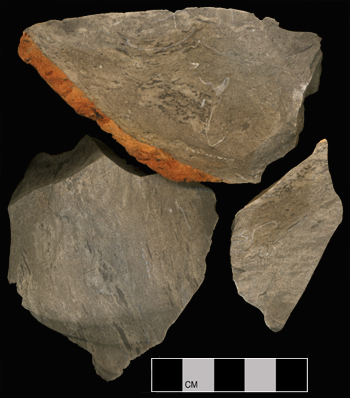
Dover Chert
The Dover quarries of Stewart County, Tennessee are the type locality for Dover Chert. Macroscopically similar material is widely exposed throughout the lower Tennessee and Cumberland River valleys where it is recovered primarily as either residuum or streambed alluvium (Nance 2000:84-85). It has also been reported from southern Illinois ((Meyers 1970).
At the Dover locality, Parish recognizes two color variants: dark matrix and light matrix (light brown, caramel, or white). The illustrated objects fall into the light matrix category. The presence of soil adhering to the cortex supports his observation that the lighter colored variants are recovered from "...within the soil matrix." (Parish 2009b:48).
After decades of speculation (Stelle 1984:155-156), recent fieldwork by Parish notes that the main chert bearing formations in Stewart County are the St. Louis, Warsaw, and Fort Payne limestones of the Mississippian System. Dover is found on top of the Warsaw and at the base of the St. Louis and is concluded to be residuum of the St. Louis Formation (Parish 2009b:121, 126, 135).
